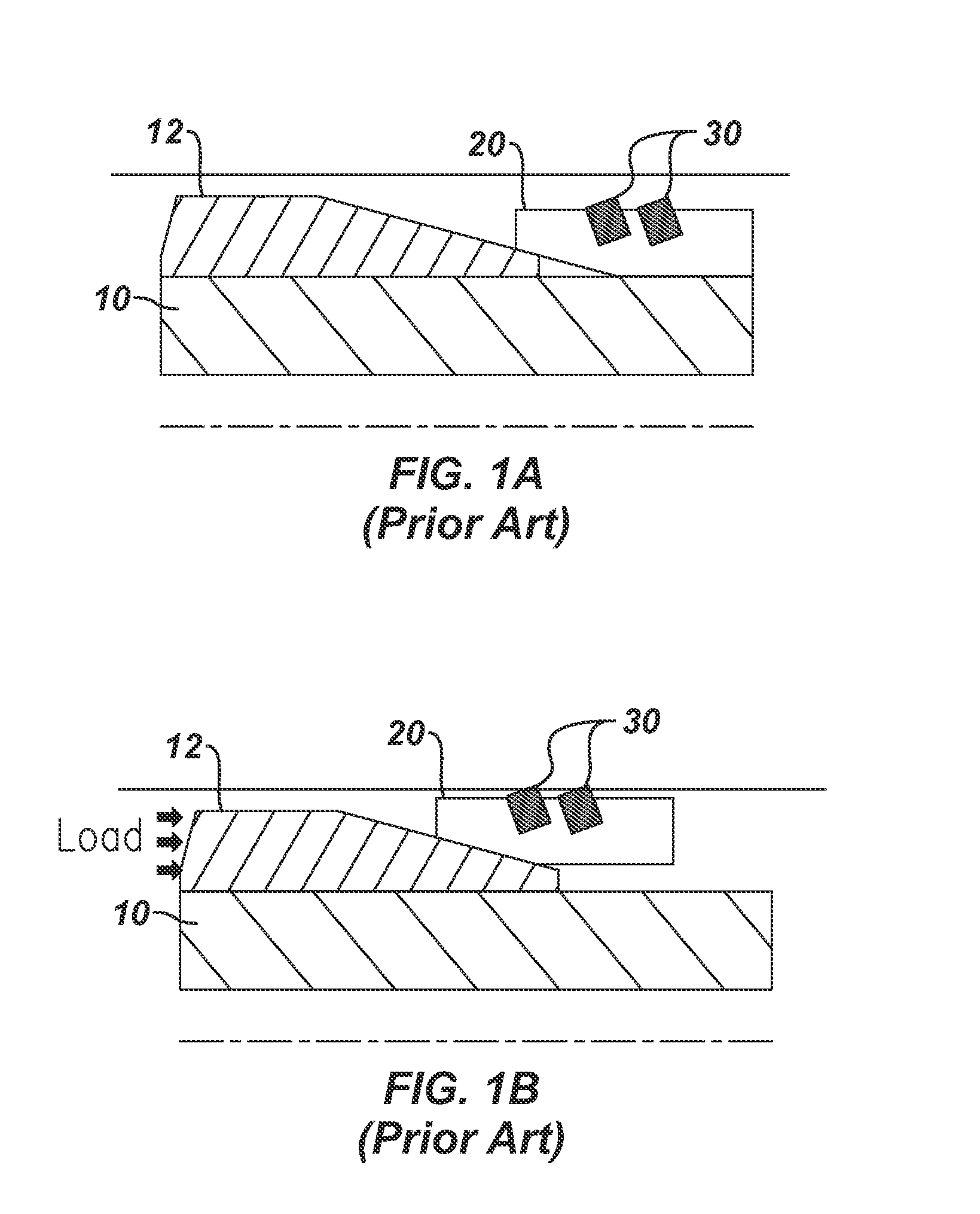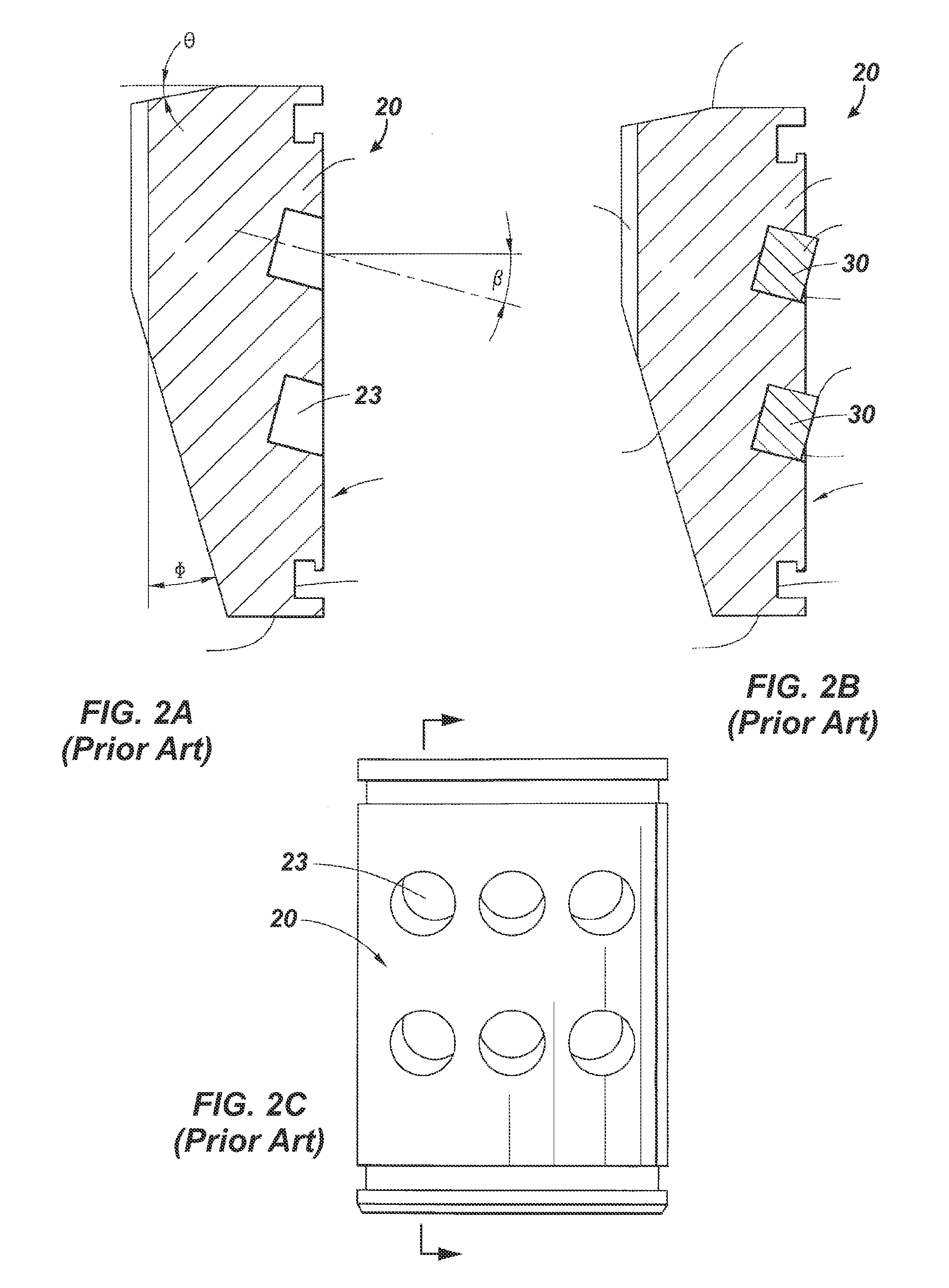Inserts Having Geometrically Separate Materials for Slips on Downhole Tool
- Summary
- Abstract
- Description
- Claims
- Application Information
AI Technical Summary
Benefits of technology
Problems solved by technology
Method used
Image
Examples
Embodiment Construction
[0032]FIG. 3 illustrates a downhole tool 100 in partial cross-section having slip assemblies 110U, 110D according to the present disclosure. The downhole tool 100 can be a bridge plug as shown, but it could also be a packer, a liner hanger, an anchoring device, or other downhole tool that uses a slip assembly to engage a downhole tubular, such as casing.
[0033]The tool 100 has a mandrel 102 having the slip assemblies 110U and 110D and backup rings 140 arranged on both sides of a packing element 150. Outside the inclined cones 112, the slip assemblies 110U and 110D have slips 120. Together, the slips 120 along with the cones 112 can be referred to as slip assemblies, or in other instances, just the slips 120 may be referred to as slip assemblies. In either case, either reference may be used interchangeably throughout the present disclosure. Thus, reference herein to a slip is not meant to refer only to one slip body, segment, or element, although it can. Instead, reference to slip can...
PUM
 Login to View More
Login to View More Abstract
Description
Claims
Application Information
 Login to View More
Login to View More - R&D
- Intellectual Property
- Life Sciences
- Materials
- Tech Scout
- Unparalleled Data Quality
- Higher Quality Content
- 60% Fewer Hallucinations
Browse by: Latest US Patents, China's latest patents, Technical Efficacy Thesaurus, Application Domain, Technology Topic, Popular Technical Reports.
© 2025 PatSnap. All rights reserved.Legal|Privacy policy|Modern Slavery Act Transparency Statement|Sitemap|About US| Contact US: help@patsnap.com



